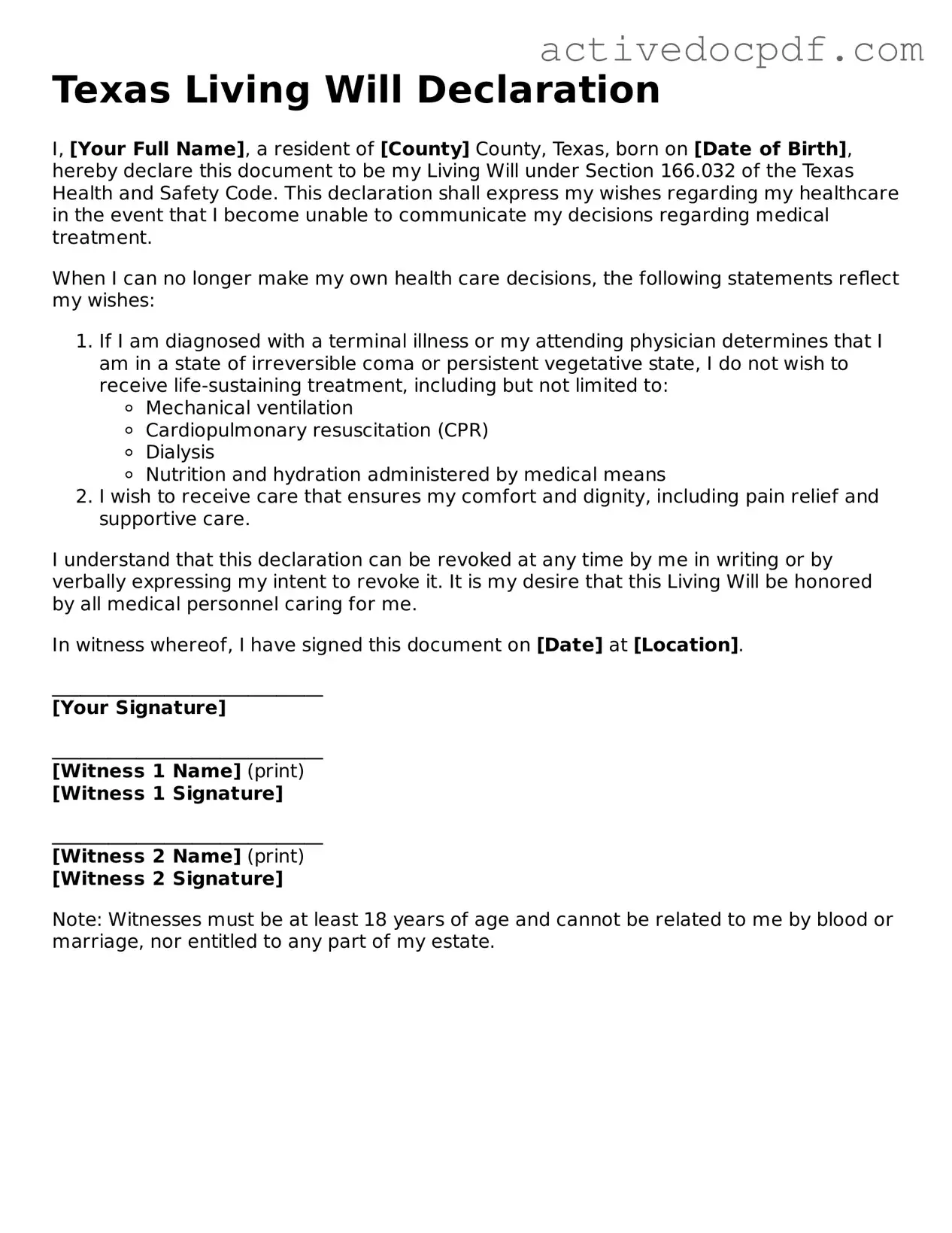What is a Texas Living Will?
A Texas Living Will is a legal document that allows you to express your wishes regarding medical treatment in case you become unable to communicate your preferences. It specifically addresses situations where you may be terminally ill or in a persistent vegetative state. This document helps guide healthcare providers and your loved ones in making decisions that align with your values and desires.
Who should consider creating a Living Will?
Anyone over the age of 18 should consider creating a Living Will. It’s especially important for individuals with serious health conditions or those who want to ensure their medical treatment preferences are known. Even if you are young and healthy, having a Living Will can provide peace of mind for you and your family.
How do I create a Texas Living Will?
Creating a Texas Living Will involves a few straightforward steps:
-
Obtain a Texas Living Will form, which can be found online or through legal offices.
-
Fill out the form with your specific wishes regarding medical treatment.
-
Sign the document in the presence of two witnesses or a notary public, as required by Texas law.
-
Provide copies to your healthcare providers and family members to ensure they are aware of your wishes.
Can I change or revoke my Living Will?
Yes, you can change or revoke your Living Will at any time, as long as you are mentally competent. To revoke it, simply destroy the document or create a new one that clearly states your updated wishes. Inform your healthcare providers and family members about any changes you make to ensure everyone is on the same page.
What happens if I don't have a Living Will?
If you do not have a Living Will, medical decisions may be made by your family members or healthcare providers based on what they believe you would want. This can lead to confusion or conflict among loved ones, especially in emotionally charged situations. Having a Living Will can help avoid these potential issues and ensure that your preferences are honored.
Is a Living Will the same as a Durable Power of Attorney for Healthcare?
No, a Living Will and a Durable Power of Attorney for Healthcare are different documents. A Living Will focuses on your specific wishes regarding medical treatment, while a Durable Power of Attorney for Healthcare allows you to appoint someone to make medical decisions on your behalf. It’s often advisable to have both documents to ensure comprehensive coverage of your healthcare wishes.
